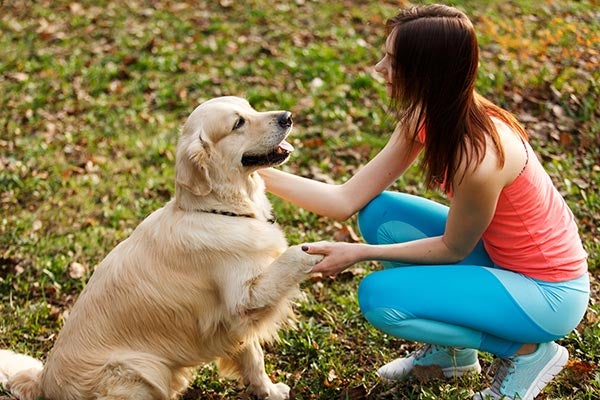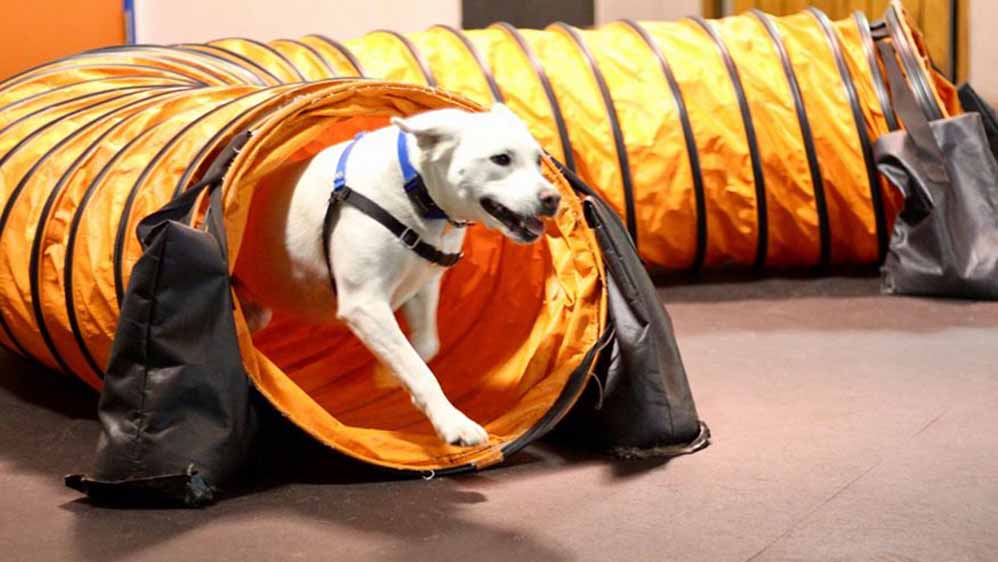Enjoyable Activities to Boost Your Dog Training Experience
Enjoyable Activities to Boost Your Dog Training Experience
Blog Article
Important Tips for Successful Dog Training: A Guide for Pet Dog Owners
Reliable dog training is a diverse process that calls for a tactical technique tailored to both the animal's personality and the owner's goals. Recognizing just how to navigate these barriers can dramatically enhance the training experience, inevitably transforming the connection in between proprietor and dog.
Recognizing Canine Habits
Recognizing dog behavior is essential for reliable training and fostering a harmonious relationship in between pooches and their proprietors. dog training. Canines interact mostly with body language, articulations, and actions, making it critical for proprietors to analyze these signals properly.

Socialization plays a considerable role in canine actions; direct exposure to numerous environments, individuals, and other pets can dramatically impact a dog's personality. Additionally, factors such as type features and specific temperament ought to lead training techniques, as some breeds might have details behavioral characteristics that demand customized techniques. By recognizing these components, proprietors can create an encouraging environment that encourages favorable actions, resulting in successful training outcomes and a much deeper bond with their pet dogs.
Developing Constant Commands
Efficient interaction with your canine begins with developing consistent commands. This foundational element of training is vital for fostering understanding between you and your animal. Consistency in the commands you make use of makes sure that your pet dog can dependably associate details words or phrases with the desired behaviors.
When selecting commands, pick clear, unique words that are simple to say and set apart from one an additional. Prevent utilizing similar-sounding commands that may perplex your canine. As an example, making use of "rest" and "remain" is ideal, yet "rest" and "hit" could cause misconceptions.
In addition, keep the very same tone and volume for each and every command. Pets are delicate to singing signs, so varying your tone can produce complication.
It is just as essential to ensure that all family members are on the very same web page pertaining to the commands used. A united front in command use will stop mixed signals and reinforce the learning process.
Positive Support Techniques
The power of favorable reinforcement in pet dog training exists in its capability to encourage preferred habits via rewards and appreciation. This technique is based in the concept that actions complied with by positive outcomes are extra likely to be repeated. By including favorable support into your training program, you can efficiently form your dog's behavior in a useful fashion.
To carry out favorable reinforcement, it's important to recognize what encourages your pet dog, whether it be deals with, playthings, or spoken praise. When your pet dog carries out a desired activity, such as resting on command, instantly award them with a reward or love. This organization between the command and the favorable outcome reinforces their understanding.
It's vital to timing the rewards correctly; providing the reinforcement within secs of the desired actions helps your canine make the link (dog training). Additionally, uniformity is key-- make certain that all relative make use of the very same commands and reward systems to prevent complication

Progressively, you can minimize the regularity of treats as your dog More Info learns the behavior, transitioning to praise or periodic benefits. This technique not just fosters a strong bond between you and your dog but also promotes a positive knowing setting, making educating a pleasurable experience for both.
Socialization and Interaction
Consistently exposing your canine to a range of environments, people, and various other animals is critical for their social development. Socializing should start early, ideally throughout the crucial window of 3 to 14 weeks, when young puppies are most responsive to brand-new experiences. Older pet dogs can additionally profit from ongoing socializing initiatives.
Present your pet to various setups, such as parks, pet-friendly shops, and city locations. This direct exposure assists them adapt to numerous stimulations, minimizing anxiety and fear responses. Motivate positive interactions with various other canines and people, making certain that these experiences are regulated and secure to promote self-confidence.
Utilize structured playdates with courteous pet dogs, as this can enhance your pet dog's social skills and instruct them proper habits. Obedience classes and training sessions also offer outstanding possibilities for socialization, permitting your canine to communicate with others in a monitored setting.
Display your dog's body language throughout communications, as this will aid you assess their convenience degree. Slowly increase direct exposure to more difficult scenarios while making sure that each experience is favorable. A well-socialized dog is most basics likely to exhibit well balanced behavior, making them a happiness to have in any setup.
Dealing With Common Training Challenges
Every pet dog owner will certainly come across training challenges eventually, despite their dog's age or socializing level. Recognizing common issues such as stubbornness, interruptions, and terror can aid in creating reliable strategies for enhancement.

Distractions throughout training sessions can derail emphasis. To battle this, start training in a silent environment with very little stimulations. Progressively present diversions as the pet dog comes to be a lot more proficient in commands. Short, constant training sessions are also effective in preserving attention.
Fearfulness can prevent a canine's understanding procedure. Steady desensitization to the source of fear, coupled with favorable reinforcement, can help minimize stress and anxiety. Patience is vital; never ever require a dog right into a scenario that triggers distress, as this may exacerbate the concern.
Eventually, understanding and dealing with these usual obstacles with an organized technique will certainly foster a more efficient training experience, strengthening the bond in between dog and proprietor while advertising effective learning.
Final Thought
In recap, successful pet dog training depends on an extensive understanding of canine actions, the establishment of constant commands, and the application of positive reinforcement techniques. Socializing plays an essential role in developing well-adjusted animals, while attending to typical training difficulties calls for persistence and flexibility. By executing these essential techniques, pet proprietors can cultivate a solid bond with their canines and promote desirable habits, eventually resulting in a harmonious partnership in between people and their canine buddies.
Understanding dog actions is necessary for reliable training and find out promoting an unified relationship in between canines and their proprietors.Socializing plays a significant duty in canine behavior; direct exposure to different atmospheres, people, and various other animals can considerably affect a pet dog's temperament.The power of positive reinforcement in pet training lies in its capability to urge preferred actions with benefits and appreciation. By including positive reinforcement into your training regimen, you can successfully shape your pet's actions in a useful way.
In summary, successful dog training depends on a thorough understanding of canine actions, the facility of regular commands, and the application of positive reinforcement strategies.
Report this page